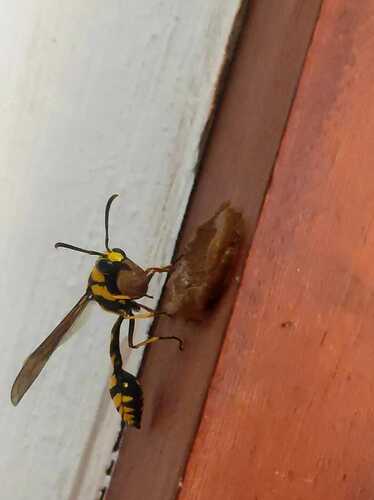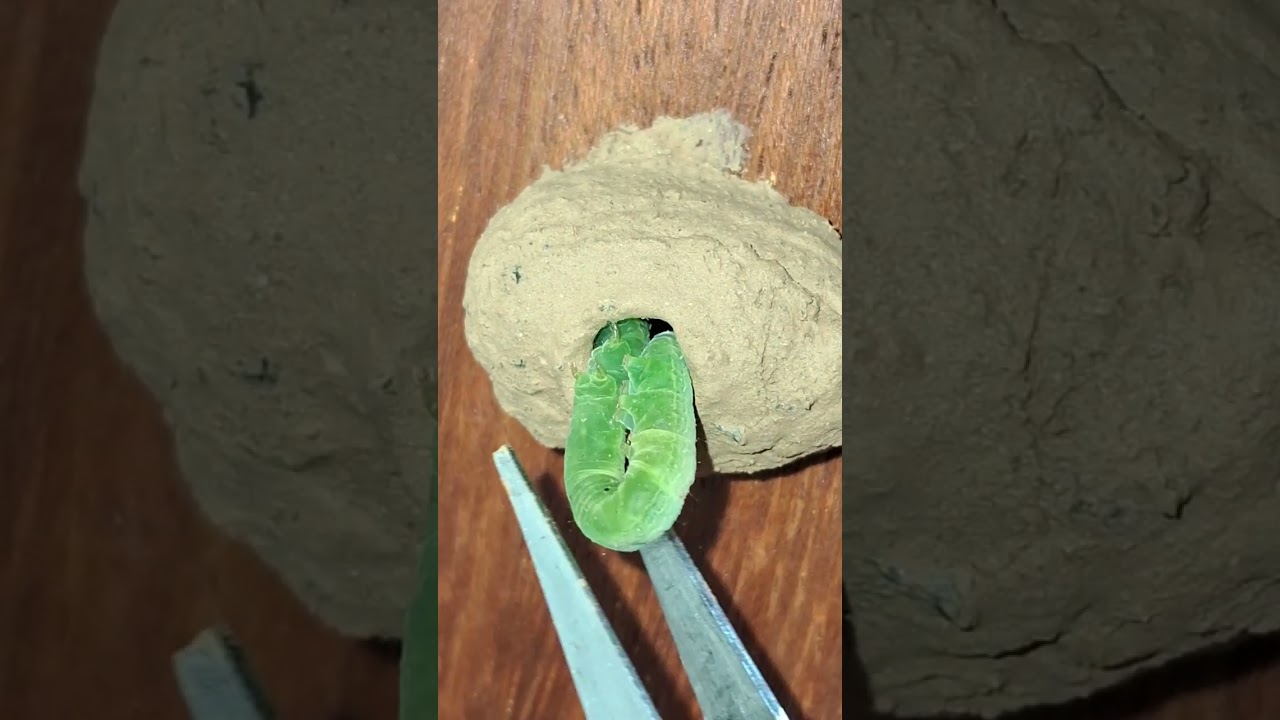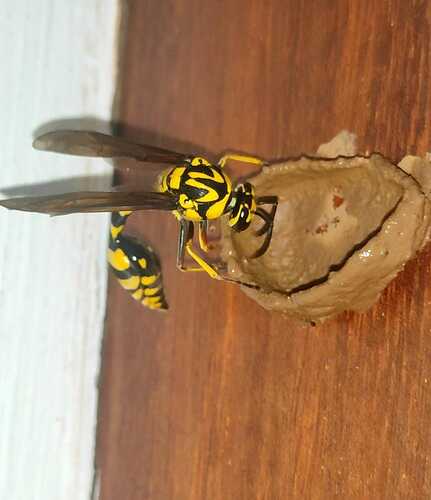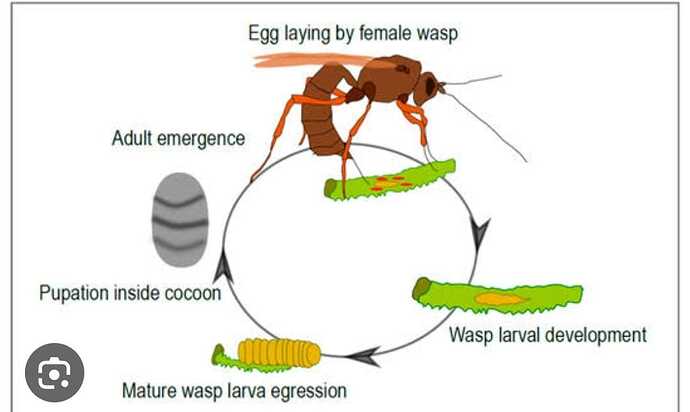Wasps, like many other insects, possess a remarkable ability to construct intricate nests.
Today, I saw a wasp making a nest using wet soil. It collected soil in its flight, then returned to build the nest.
Why are they using soil !? Is there any interesting thing behind that ?
i made a quote myself by observing the beautiful event :Nature-inspired civil engineer .
And yes ,this pretty wasp helping geotechnical engineers😀
I came up with this paper
https://www.nature.com/articles/s41598-022-06162-2
Mud daubers can produce a repetitive tapping (i.e., vibratory compaction) to compact nest soil using their front legs and mandibles.
This study showed that the high strengths and high densities of black and yellow mud dauber nests were attributed to (1) vibratory compaction performed by mud daubers, (2) high capillary cohesion in the nest soils due to low moisture content, (3) well-graded soil grain size distribution, and (4) clay minerals serving as cementing agents in the nest soils. These factors can inspire civil engineers to develop resilient and durable earthen constructed buildings and sustainable soil improvement techniques (e.g., bio-inspired vibratory compaction), which will be explored in future studies.
Whole story
I observed a wasp collecting three caterpillars and adding them to its nest. Initially, I thought they could be food for future progeny, but my father suggested they might actually be eggs. However, I disagreed, stating that they were caterpillars. Later, I searched for references on the wasp lifecycle and i found out that it is possible that wasp can lay eggs on hosts and later progenies can emerges out of it .
Date:24/09/2023
Theertha
Watch the full video
The interesting thing that i came to know is that Wasp considering Caterpillar as a host and laying eggs into it.



